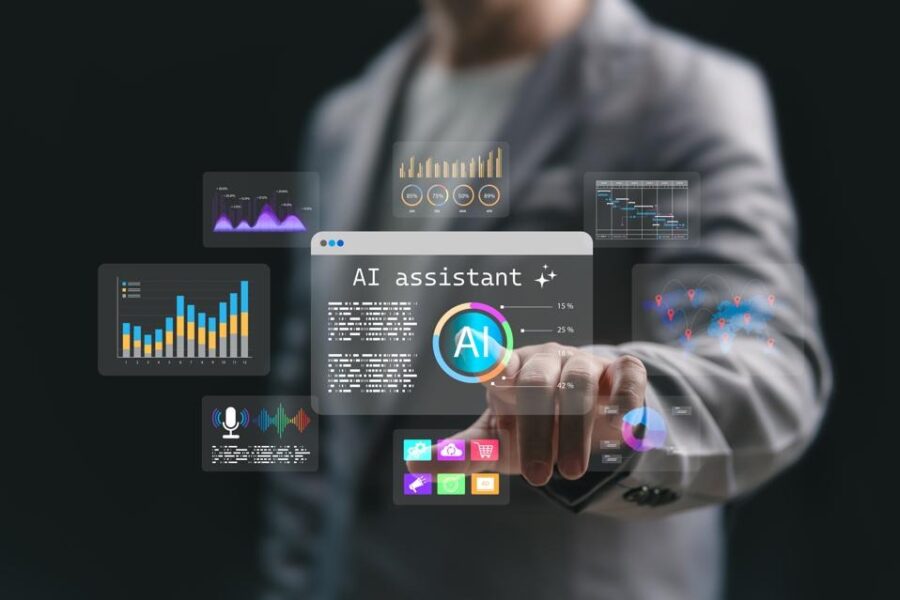The High Price of the A.I. Race: Power, Pollution, and the Illusion of Progress

Artificial intelligence is often promoted as the cure for society’s biggest problems—making life safer, faster, and more efficient. But beneath the promises of innovation lies a deeper question: what is the race to develop A.I. really costing us?
At the center of this global tech race is AGI, or artificial general intelligence—the theoretical point when A.I. matches or exceeds human intelligence. Tech giants like OpenAI, Meta, Google, and xAI view AGI as the ultimate prize. The frenzy to reach that milestone has helped drive an extraordinary share of U.S. economic growth this year. In fact, Harvard economist Jason Furman estimates that A.I. spending accounted for up to 90 percent of U.S. GDP growth in the last quarter alone. The surge is staggering—but so are the consequences.
The first and most immediate cost is environmental. Building and training massive A.I. models requires enormous amounts of energy. As Karen Hao, author of Empire of AI: Dreams and Nightmares in Sam Altman’s OpenAI, explains, the supercomputers powering A.I. systems demand resources on a scale previously unimaginable. Both OpenAI and Meta have reportedly planned facilities the size of Manhattan—each consuming as much energy as New York City. A McKinsey report warned that, even under conservative scenarios, data centers could soon require the equivalent power of two Californias, and in accelerated projections, as many as six.
The problem doesn’t stop there. Much of this energy comes from fossil fuels, not renewables. A.I. development is single-handedly reviving the natural gas and coal industries, Hao says, driving up carbon emissions and worsening air pollution. In Memphis, Tennessee, Elon Musk’s xAI is training its model “Grok” on a supercomputer called Colossus, powered by 35 methane gas turbines. Local communities are already reporting environmental and public health concerns—an ironic twist considering Musk’s role as the founder of Tesla, a company built on the promise of clean energy.
Beyond the environmental cost lies another concern: the economic sustainability of the A.I. boom itself. Tech companies are pouring trillions of dollars into computing infrastructure but earning only tens of billions in revenue. The math doesn’t add up. Hao calls it a “massive bubble waiting to burst,” warning that a correction could send shockwaves through the global economy. Despite their vast resources, A.I. companies are struggling to find viable business models. Subscription services have failed to attract large paying audiences, and businesses are cutting back on A.I. spending.
Now, firms like OpenAI are shifting toward advertising-based models, integrating social-style content and A.I.-generated media to monetize engagement. Yet even the biggest advertising players—like Google—generate under $300 billion annually, nowhere near enough to offset the trillions being spent on infrastructure. This imbalance, Hao notes, raises the question of whether the A.I. economy is built on real value or speculative hype.
Still, many in Silicon Valley remain undeterred. They see AGI not just as a technological goal but as a quasi-religious mission—a belief that once machines surpass human intelligence, all of society’s problems will be solved. They envision an “everything machine” capable of generating unlimited wealth, curing diseases, and even reversing climate change. But such faith in a single, all-powerful technology carries its own dangers.
To achieve AGI, these companies are consuming the world’s data, energy, and natural resources—effectively treating them as raw materials for intelligence. The cost, Hao warns, “is everything that everyone has ever owned: our data, our intellectual property, our land, our water, our energy.” In chasing the dream of limitless power and progress, we may be trading away the planet’s future.
The A.I. race reflects the same paradox that has defined every industrial revolution—a quest for advancement that risks consuming the very foundations of civilization. Unless society demands transparency, regulation, and sustainability, A.I. could end up deepening inequality, accelerating climate change, and consolidating power in the hands of a few.
The promise of artificial intelligence is real, but so are its costs. As the world’s richest companies sprint toward AGI, the question we should be asking is not whether machines will think like us—but whether we can think clearly enough to decide when the race is no longer worth running.
Related News: https://airguide.info/category/air-travel-business/artificial-intelligence/
Sources: AirGuide Business airguide.info, bing.com, cnn.com, Karen Hao, Journalist and author of the book “Empire of A.I.”
